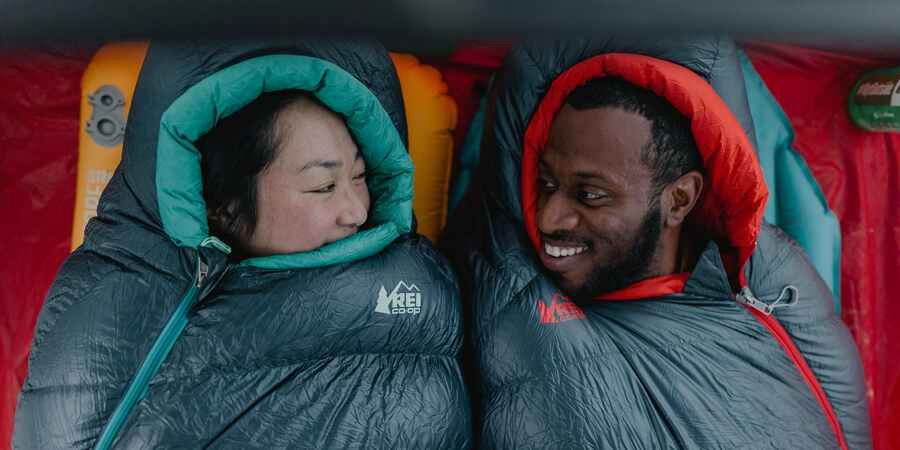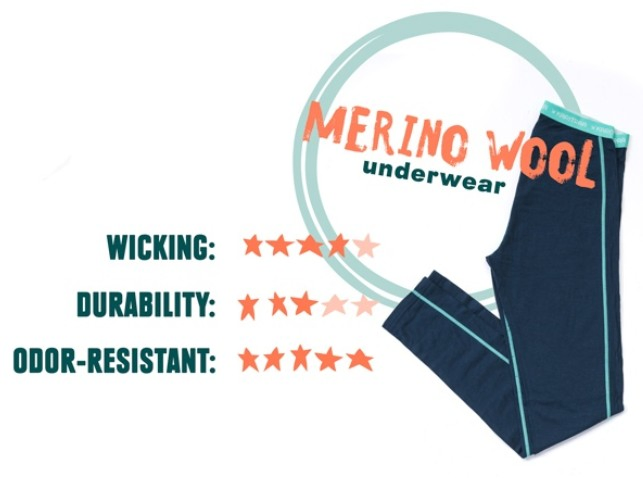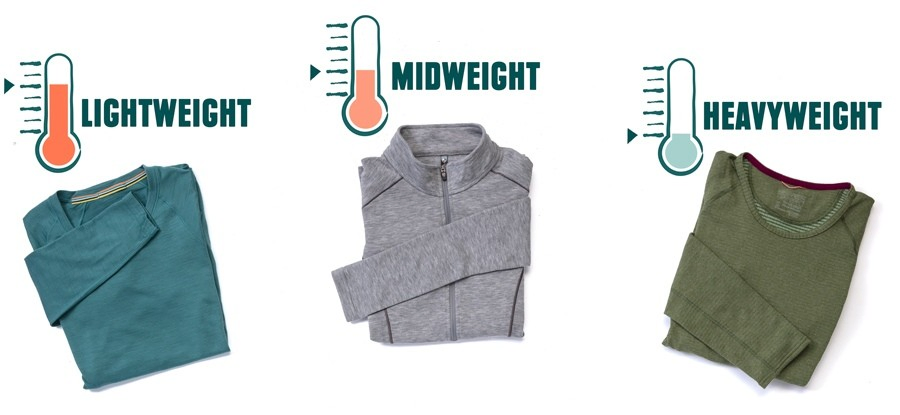Camping in the wintertime can be challenging. To me, there’s nothing worse than shivering through the night, wishing your tent were warmer. Not only is it uncomfortable, but sleeping in the cold can cause hypothermia or even frostbite.
In this tutorial, let’s review some effective ways to insulate a tent.
Ten Ways to Insulate a Tent
#1 Clear the Ground First and Insulate the Floor

If you are wondering how to make a tent warmer, perhaps the most important guideline is the setup of your tent.
To insulate the tent floor, the first step is to clear the ground beneath your tent. Clear out any snow if possible, and remove any branches, rocks, or other debris to make sure that the floor is relatively flat. This will ensure that there are no open spaces where cold air can blow in.
If you do not have a sleeping pad or other sheet to sleep on, you can cover up the cold ground with dry leaves or tarp.
For the most effective insulation of the floor, use a reflective aluminum foam sleeping pad, rug, blanket, or another type of mat. Not only will this mat separate you from the cold winter ground, preventing conduction of your body heat through physical contact with a cold surface, but it will also reflect body heat towards yourself. This will help you to stay warm throughout the night.
When selecting a sleeping pad to purchase, be sure to investigate the sleeping pad’s R-value. This rating tells you how insulating the sleeping pad is, or how resistant it is to losing heat to the ground. For the most effective winter use, the pad should be rated at an R factor of 4.0 or above.
#2 Build a Windbreak

If possible, try to camp in an area with a natural windbreak, such as trees, an outcropping of boulders, or rock faces. This will help ensure that your tent stays secure through the night.
To create a windbreak, you can tie a horizontal tarp to some trees in front of your tent. Make sure to tie the tarp at an approximate 45-degree angle rather than straight up and down, so that it won’t rip, as seen here:
Alternatively, if you have a tough paracord, you can tie it securely between two trees and then drape a tarp over the paracord so that it forms a pyramidal shape. You can then weigh the structure down with some rocks, as shown here:
Another tip is to make sure that the opening of your tent is facing away from the wind, of course.
#3 Winter-Proof the Tent Itself

If you do not have access to an insulated four-season tent, you can insulate the walls and top of your tent from the inside yourself. One option is to use reflective foil or a space blanket and stick it to the walls with duct tape. In doing so, you can create a type of tent insulation liner, where your body heat will be reflected back at you. However, the setup can take some time.
If you have a tarp, you can also cover the outside of your tent to provide a barrier to wind and insulate it further. You can also push some leaves around the outside of your tent so that the tent is further insulated from the outside.
#4 Use a Tent Heater
Another option is to bring a tent heater. Make sure to read the instructions and manufacturer’s label to make sure the heater is appropriate for the size of your tent, so that it will effectively heat the space without posing a hazard.
One option is a propane heater, which doesn’t require plugging in. The propane heater is best for portable use. There are also electric heaters, but these require a power generator or electrical source and may not be as convenient for backpacking trips.

Make sure that you are using your space heater safely. Keep flammable objects away from the heater at all times.
Also, propane heaters can give off dangerous carbon monoxide, so you want to make sure that your tent is well-ventilated. You should also make sure to shut off the heater before you go to sleep, for safety. Many of these heaters will be equipped with an automatic shut-off feature.
Check out this video for some tips on using a tent heater when camping:
#5 Bring Your Smallest Tent
For the most effective warmth, choose a smaller tent. The lower surface area of a more compact tent will help retain heat and prevent heat loss through radiation. A smaller tent will also be easier to heat up with a space heater, as discussed above.
You can watch this video for an example of winter camping in a small tent:
#6 Cover Up
You can cover up with blankets to keep warm inside your tent. Mylar blankets, also known as space blankets, effectively reflect your body heat back at you. You can even use duct tape to attach the mylar blanket to your tent’s ceiling to insulate the tent, as explained earlier.

Make sure that you don’t cover yourself up so much that you begin sweating because this will only increase heat loss through evaporation.
#7 Heat Packs

Disposable heat packs can be placed inside your sleeping bag or inside your pockets to keep you warm. These serve as an extra measure to help stabilize your temperature throughout the night but should not be used in place of warm clothing or effective insulation.
If you don’t have a heating pack, you can boil some water and put it inside a non-insulated stainless steel water bottle or a BPA-free plastic bottle, like a Nalgene, instead. When heated, the water bottle radiates heat to keep you warm.
See the video here for a quick demonstration of a simple water bottle heating pack:
#8 Warm Sleeping Bag
To make sure you stay warm enough, bring a sleeping bag that is rated for temperatures at least 10 degrees Fahrenheit lower than the low temperature for the night. This will ensure that the sleeping bag is effective.
To better understand the temperature rating of your sleeping bag, think about whether or not you typically sleep “warm” or “cold” at home. Often, women sleep colder than men.
The “comfort rating” or T-comfort rating of the bag is the lowest temperature at which the bag can keep an average “cold” sleeper comfortable. On the flip side, the “lower limit rating” or T-limit is the lowest temperature at which the average “warm” sleeper will be comfortable.

Another important component of staying warm in your sleeping bag lies in the type of insulation. Down filling, or feathers is quite warm while not being too heavy. The synthetic filling can also be a warm option, but it is heavier. An upside of a synthetic bag is that it will still keep you warm if it gets wet, and it also dries more quickly than down filling.
For down bags, a higher number of fill power (or loft) means that the down will take up more volume and capture your body heat more effectively at a lower weight. Therefore, the higher the fill power, the lighter the bag will be at the same temperature rating.
Make sure to “fluff” or shake out your sleeping bag to evenly distribute the insulation throughout the bag for maximum warmth.
Another consideration is the shape of your sleeping bag. Mummy bags limit your movement but may be more effective at keeping you warm, while a side sleeping bag allows you freedom of movement but is less effective at warmth.
Some of the most winter-ready sleeping bags will be built with draft collars and hoods as well.
Many winter sleeping bags will also come equipped with a sleeping bag liner, or you can purchase one and insert it yourself.
Lastly, when you’re falling asleep, make sure that you aren’t breathing directly into the bag, because this causes condensation and moisture buildup inside the bag, leading to heat loss over time.
Check out this informational video to learn more about choosing a sleeping bag:
#9 Wear Thermals
Through radiation, heat leaves the body via movement into the colder air, causing our body temperature to drop. For this reason, you need to wear clothes that will capture your body heat, preventing such radiation. Thermals, such as long underwear, undershirts, and thermal socks, are great options.

The most important feature of your base thermal layer is its moisture-wicking fabric. If your skin is moist, it will lose heat through evaporation. Some of the most effective moisture-wicking fabric options include natural merino wool, silk, and synthetics, such as rayon, nylon, and polyester. Cotton is inefficient because it doesn’t wick away moisture well enough.
It is important to note that your clothing should not be wet or sweaty, because this will increase heat loss. Make sure to bring a change of clothes in case you come in contact with water.
Consider the weight of the fabric as well. For winter, choose a fabric that is rated as mid-weight to heavyweight.

Also, while you want your clothing to fit snugly so that it wicks away moisture, ensure that your clothing isn’t too tight and restrictive. Wearing overly tight clothing can impair blood flow to your hands and feet, causing a risk of frostbite.
#10 Wear Something on Your Head

Preventing frostbite starts at the head. This is because if you are too cold, your body will direct its heat (via blood flow) towards the vital organs, such as the brain, lungs, and heart, to maintain your core body temperature. This means that less blood flow is then directed to your toes and fingers, which can lead to frostbite.
To prevent heat loss from your head, make sure to wear a hat or other head covering. It’s important to choose a hat that is both warm and breathable to allow ventilation of moisture and prevent sweating. As discussed earlier, some of the best moisture-wicking fabrics include fleece, silk, merino wool, polyester, and nylon.
The head covering should also cover your ears, which are prone to cold exposure, because the cartilage in your ears lacks insulation. You can also wear ear muffs if your hat is too short to fully cover your ears.
Conclusion: Staying Warm All Night Long!

I hope you found these guidelines helpful and informative. With these tips, you can be ready for nearly any winter weather and keep your tent warm, so you won’t wake up shivering with frozen toes and fingers any longer.
Please leave your thoughts or comments below, and remember to share the article if you found it useful!



